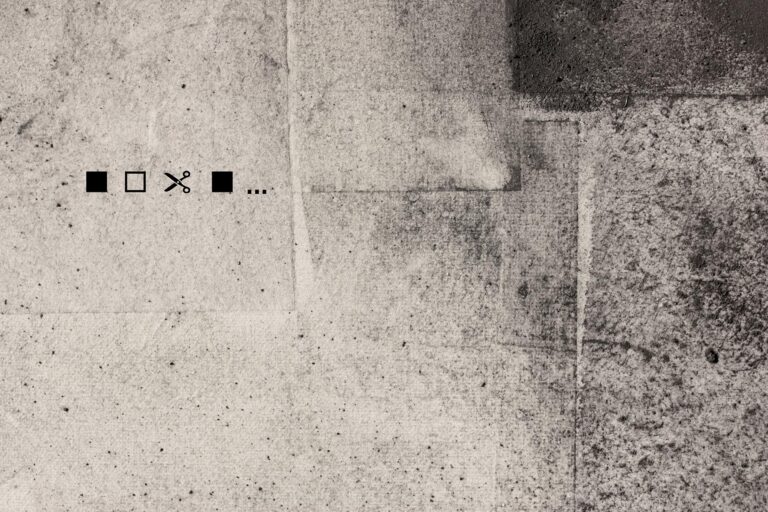
„[…] Stones can be left to fend for themselves.
We are fascinated by them because they outlast us. So we use them as parables for eternities. The temporal references here are applied to people.
The stone is considered a sign of the presence of humans, as traditional example for forms of human existence, for personal power, and for cult practice.
Stones as materialization of spiritual life."
Günther Uecker 1969
Rock, paper, scissors... rock, sounds the well-known children's game, where the symbols shaped by our hands decide whether the stone wraps the paper, the paper is cut by the scissors, and the edge of the scissors is cut by the stone, recalling the uninterrupted cycle of life in a reduced form of symbols. It is no coincidence that, although with varying motifs, the hand-pointer decision-making game has been known in Eastern cultures since at least 2000 years in the Chinese Han Dynasty.
The title of the exhibition presenting the latest works of graphic artist András Kiss Botond refers specifically to the artist's working tools: stone, paper and scissors, the broad spectrum of the ways in which these materials are used and the wide range of meanings they have in them, which largely determine Kiss's working method and artistic approach.
Botond András Kiss's 2017 thesis (Stepping Stones) foreshadowed his philosophical interest and his terse, austere stylistic alignment. Botond's approach draws heavily on the ideas of Japanese traditional art, while at the same time he takes an intermedia approach to his subjects: printmaking, blind printing, collage, photography, the book object, the object, and the organisation of all these into installations that initiate a dialogue with each other are integral parts of the artist's holistic artistic thinking. And one more thing: the evocation of the phenomena of the world in the form of a model, breaking them down into modules and then placing these units in a new structure.
The Rock - Paper - Scissors - Rock... exhibition can in fact be seen as a complex installation, a special kind of maquette, where the individual parts (artworks), although they can be viewed separately, are part of the whole. The focus of András Kiss Botond's attention is on the stone as a basic unit, as a standard. Stone, as an ancient natural formation, as the first consciously used building material of human civilization, represents the archetypal basic module, more permanent than ore. In his mixed-technique works, the walls, which appear as fragments, are fascinating to the artist precisely because their structure, system and stability are determined by the changing arrangement and specific network of stones. Botond András Kiss's working method is a mixture of painting, printmaking and bookmaking: the facture of the cut-out Japanese papers applied in several layers on the canvas determines the final statics of the fit of the depicted (and fictitious) stone wall, whose plastic overall effect is created by the fading or even intensifying intensity of the graphite powder sprinkled on the substrate. The artist's (re)constructive attitude is manifest in his series of photographs entitled Gates, where he evokes the complex system of meanings behind the gate as a historical symbol in a very particular, floating and floating state.
Botond András Kiss's interest in archaeology and museology characterises his entire oeuvre, so it is not surprising that the exhibition, which dissects the metaphorical possibilities of stone, is also summed up in an ancient yet abstract sign. The stepped star shape evoked in the blind prints and objects is a geometric decorative element that appeared almost independently in the first great cultures (Egypt, Mesopotamia, South American cultures) as a form of wall decoration and niche structure. It is in this motif that the 'regimentation' of stone is fully realised, the exploitation of the load-bearing capacity that man craved, the endowment of stone with a human character and a historical scale.
Botond András Kiss (1992) studied at the Hungarian University of Fine Arts, Faculty of Graphic Arts between 2012-2017, where his master was András Lengyel. Currently he is a staff member of the paper restoration workshop of the Museum of Fine Arts in Budapest. Her study trips to Japan in 2019 and Italy since 2015 have been an important inspiration for her art. In addition to traditional printmaking techniques, he creates objects, photographs, installations and artist books. Since 2022 he has been an artist at The Space Gallery.
Noémi Szabó, art historian
The exhibition was supported by the National Cultural Fund of Hungary.
